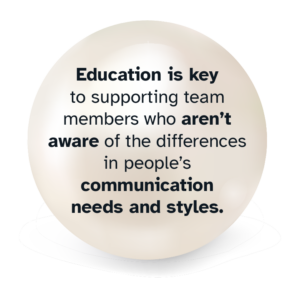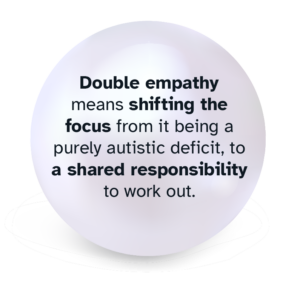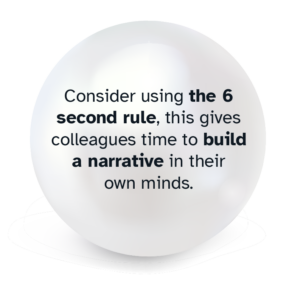With neurodiversity comes ways of thinking and communicating that can both enrich workplace interactions and challenge the way things are done. From project briefings to one-to-one conversations, understanding these differences is crucial for fostering an inclusive environment and effective communication.
Communication nuances can differ significantly between neurodivergent and neurotypical people. While autistic folks often prioritise clarity and understanding, non-autistic communication often involves implicit rules and hidden agendas. These differences can lead to misunderstandings and misinterpretations. To help mitigate this, it’s important for everyone to gain a greater understanding of neurodiversity.
Our web developer, Ian, has a few pearls of personal insight to help us do exactly that…
Reshape the narrative 
Co-create a neurodiversity programme with and alongside neurodivergent colleagues, not for or in place of them. Education is key to supporting team members who aren’t aware of the differences in people’s communication needs and styles, and the benefits neurodivergent team members offer the organisation.
Honest intentions
One notable challenge faced by neurodivergent folk can be when their honesty comes across as unintended bluntness. Candidness may inadvertently cause discomfort or offense, highlighting the need for greater awareness and a deeper understanding of the neurodivergent person’s perspective and intentions. Working with a general recognition and acceptance of each other’s diverse communication styles will help ease anxieties.
Double Empathy theory 
This theory acknowledges the unique empathy that’s required between autistic and non-autistic people – it’s a two-way challenge. If an autistic person is not meeting a non-autistic person’s expectations, the responsibility of this can cause more cognitive, social, and sensory stress. So, double empathy means shifting the focus from it being a purely autistic deficit, to a shared responsibility to work out.
Mindful about masking
The concept of masking presents another layer of complexity. Neurodivergent individuals may be (possibly subconsciously) masking their differences to fit in, or have other coping mechanisms, which can be misconstrued as dishonest by their neurotypical colleagues. This misinterpretation can lead to further communication barriers.
To help lift these barriers, it’s important to consider that some of these masking and coping mechanisms may present as self-soothing gestures, lack of or too much eye contact, long and detailed or delayed answers, a flat tone of voice, mimicking and inappropriate laughter.
Take time 
Interactions where the neurotypical person loses patience, disbelieves, or rejects the neurodivergent person can have a traumatising effect on them, while the neurotypical person has potentially already forgotten and moved on.
Consider using the 6 second rule (waiting before responding), this gives colleagues time to build a narrative in their own minds, knowing they won’t be interrupted before that time.
Getting to know your team better builds trust and facilitates greater depth and understanding about where their opinions, learning styles and communication needs come from and how to navigate conversations in an inclusive, mutually beneficial way.
Ultimately, fostering inclusive communication in the workplace involves acknowledging and embracing the complexities of neurodiversity. By promoting empathy, understanding, and open dialogue, organisations can create environments where everyone thrives.
By Ian Cooper for Alive!
















